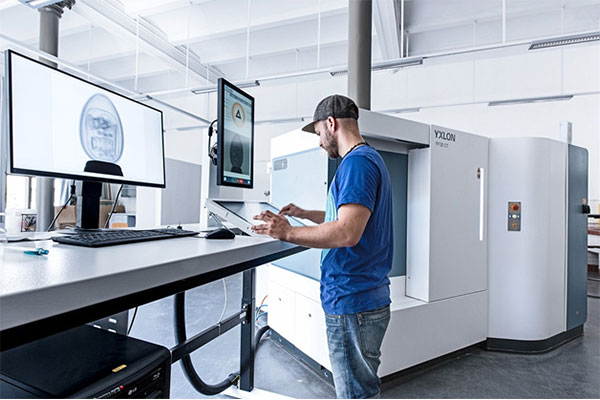On Wednesday, October 4th, the wait was finally over. The Museum für Naturkunde Berlin (MfN, Museum of Natural History Berlin) opened its doors to the Hall of Microscopes. Here, interested visitors now have a chance to experience live from 1 pm to 4 pm how objects of natural-historic collections are three-dimensionally captured and analysed for research with the Yxlon computed tomography. In the course of this, they also have the opportunity to enter into dialogue with the scientists. This provides a novel way of making living science accessible to society.

The new visitor attraction was made possible by a special collaboration between the Museum für Naturkunde Berlin and X-ray system manufacturer YXLON International from Hamburg. For at least the next 9 months Yxlon is loaning its high-resolution CT system FF35 CT to the Museum for various research projects. Only computed tomography provides detailed, three-dimensional insights into the smallest structures without damaging or possibly destroying objects. The YXLON FF35 CT can even scan larger objects like e.g. complete animal skulls in their entirety.
That’s how CT opens up completely new possibilities for research. Moreover, rare and valuable finds can be quickly and easily digitally archived and made available to the global public. In return, the scientists of the MfN will share their experience of working with the equipment so it can be incorporated directly into the future technical developments of the Yxlon CT systems in order to specifically optimise computed tomography for the life science sector.
As a research museum of the Leibniz Association, the Museum für Naturkunde Berlin holds collections that comprise more than 30 million objects from zoology, paleontology, geology and mineralogy. They are a unique cultural asset and provide an exceptional, internationally used research infrastructure of the highest scientific and historical importance.
For the test phase of the YXLON FF35 CT system, five sections of MfN’s cultural collections will be the focus of the collaboration:
- Skulls and skeletons of mammals
- Fossil specimens from various rock strata with inclusions and highly diverse preservation techniques
- Drilling samples with mineral particles
- Contrasted reptiles and amphibians
- Pinned insects
